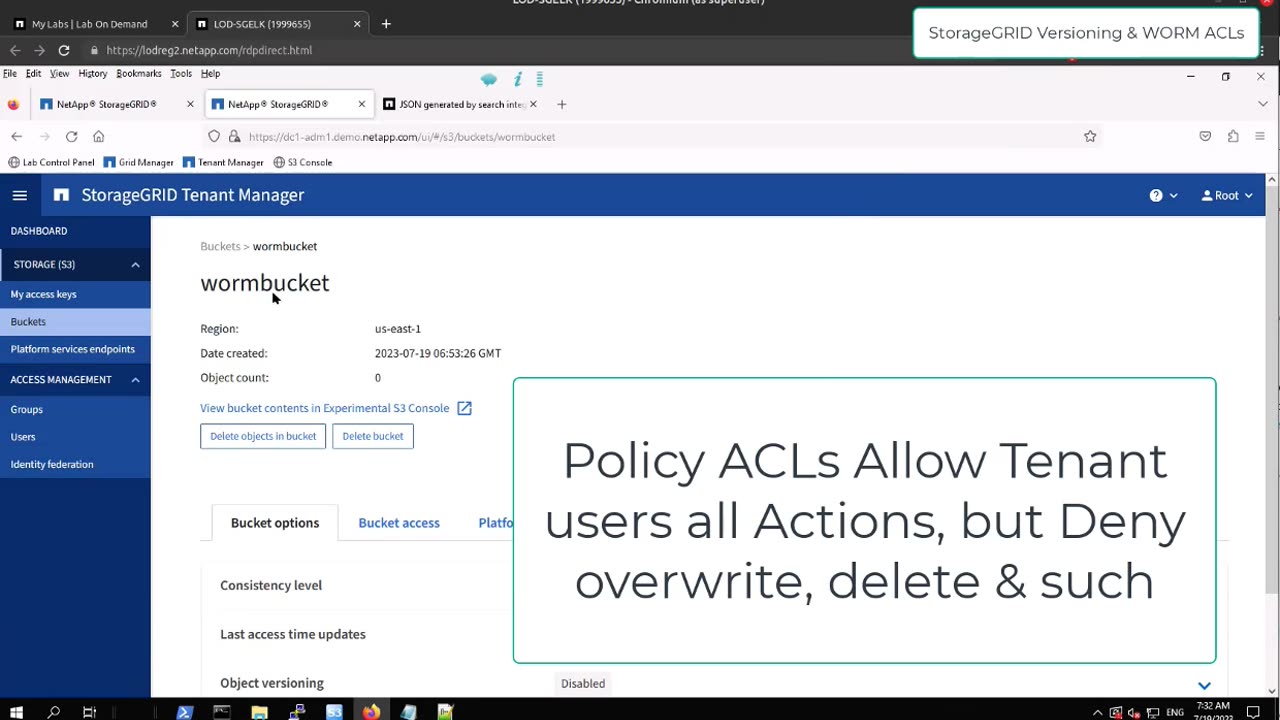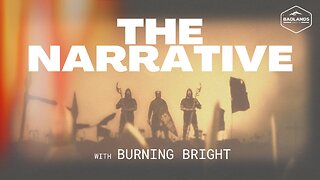Premium Only Content

How versioning and WORM-like ACLs work on NetApp StorageGRID
Versioning is used to provide access to previous revisions of an object (e.g. GET object.mp3?v=2 gets revision #2 of the object). *If* users are allowed to overwrite objects but *not allowed* to delete old versions (not the default!), then objects practically become indelible.
But each revision is a copy that takes up disk space, so the benefit of versioning should be higher than its cost.
One popular feature used in conjunction with S3 versioning is S3 Object Lock with specified retention, which guarantees retention until a certain date, but unlocks and allows deletion of older objects - very useful for backups that need to be ransomware-resistant as long as they're needed.
But even without any of these tricks, the versioning feature protects files from accidental deletion or change, as you can always GET object.mp4?v=2 and re-upload it to recover from deleting the object or uploading a wrong revision 3.
Wondering about Object Lock with S3 versioning vs. legacy "Compliance"? See https://docs.netapp.com/us-en/storagegrid-117/ilm/managing-objects-with-s3-object-lock.html
"Software WORM" or ACLs-based WORM is simpler: it aims to prevent users from modifying (and hence also deleting) existing objects. To do that we craft a bucket policy ACL that prevents these requests to non-admin users. Obviously this isn't as robust, but it serves many purposes, including prevention from accidental modification or deletion of files, and unlike versioning, does not take extra storage space.
-
 LIVE
LIVE
Badlands Media
19 hours agoThe Narrative Ep. 47: Arctic Alliance
2,168 watching -
 LIVE
LIVE
SpartakusLIVE
53 minutes agoLIVE from the Creator House in FLORIDA || WZ Solos to Start - PUBG, REDSEC or ARC Later?!
372 watching -
 58:03
58:03
MattMorseTV
1 hour ago🔴Trump is BRINGING the CHARGES. 🔴
2.7K17 -
 LIVE
LIVE
EricJohnPizzaArtist
4 days agoAwesome Sauce PIZZA ART LIVE Ep. #70: Movie Night featuring Dark Helmet!
214 watching -
 LIVE
LIVE
Joker Effect
21 minutes agoMASSIVE UPDATES ON MY CHANNEL... what does 2026 look like? CHATTIN WITH WVAGABOND (The Captain).
333 watching -
 2:24:34
2:24:34
vivafrei
11 hours agoEp. 292: Bondi's Betrayal & Comey Judge Caught Lying! Crooks Acted Alone? Judicia Activism & MORE!
155K93 -
 LIVE
LIVE
GritsGG
5 hours ago#1 Most Warzone Wins 4015+!
1,011 watching -
 LIVE
LIVE
Due Dissidence
8 hours agoTrump SMITTEN By Mamdani, MTG RESIGNS, Hurwitz DOUBLES DOWN on CENSORSHIP, RFK Jr "Poetry" EXPOSED
1,308 watching -
 39:40
39:40
Tactical Advisor
5 hours agoUnboxing New Tactical Packs | Vault Room Live Stream 046
56.1K6 -
 3:30:58
3:30:58
elwolfpr
3 hours agoElWolfPRX Enters the Storm: First Winds
6.68K